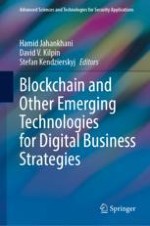This book aims to explore the aspects of strategic leadership in a digital context together with the cyber-physical relationships whilst performing business activities. Furthermore, this book looks to investigate the interactions from both the organization strategy including the cross-functional actors/stakeholders whom are operating within the organization and the various characteristics of operating in a cyber secure ecosystem.
The book provides a valuable reference for IT directors, strategic leaders, cybersecurity experts, network security professionals. It is also aimed at researchers seeking to obtain a more profound knowledge of machine learning and deep learning in the context of cybersecurity. Furthermore, the book is an exceptional advanced text for Ph.D. and master’s degree programs in cybersecurity, network security and computer science. Each chapter is written by an internationally renowned expert who has extensive experience in law enforcement, industry or academia. Furthermore, this book blends advanced research findings with practice-based methods to provide the reader with advanced understanding and relevant skills.
